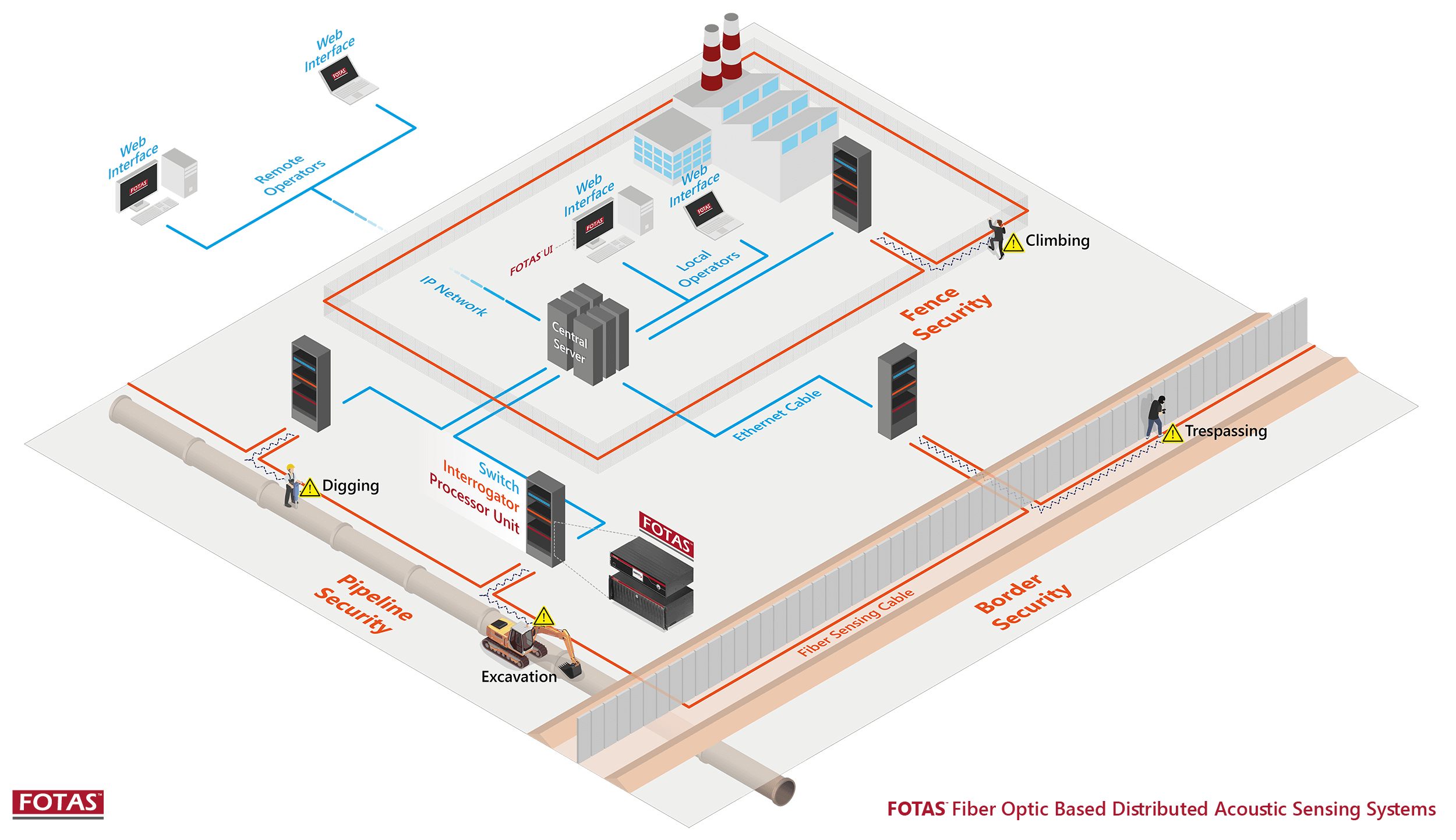The Ultimate Guide to Fiber Optic Safety Equipments for Your Company
In an age where safety worries are extremely important for companies, understanding the complexities of fiber optic technology can be transformative. This guide describes just how integrating fiber optic protection systems not just enhances information security yet likewise provides benefits like resistance to interference and real-time monitoring capacities. As organizations evaluate their safety needs, it comes to be crucial to think about the installment process and the latest technologies in the area. What specific aspects should be prioritized when choosing the right system, and just how can services ensure they make one of the most enlightened selections?
Recognizing Fiber Optic Technology

The core of a fiber optic cable television is composed of a slim glass or plastic center, bordered by a cladding layer that mirrors light back right into the core. Single-mode fibers are designed for long-distance transmission, while multi-mode fibers are appropriate for shorter ranges, commonly made use of within buildings.
Optical fiber are not only faster but also much more protected than traditional electrical wiring. Their intrinsic resistance to electromagnetic interference and the trouble of tapping right into the signal without discovery make them a preferred option for companies focusing on data stability and protection. As companies significantly rely upon secure and reliable communication systems, understanding fiber optic technology ends up being crucial for notified decision-making.
Key Advantages of Fiber Optic Safety
When considering protection alternatives for a service, the benefits of fiber optic systems are specifically compelling. Primarily, fiber optic technology offers extraordinary data transmission rates and data transfer capacity, making it perfect for dealing with high-resolution video clip feeds from surveillance cameras. This capability ensures that security workers get real-time data, enhancing overall feedback times to potential safety and security risks.
Moreover, fiber optic cable televisions are inherently immune to electromagnetic disturbance, which can endanger the stability of conventional copper-based systems. This resistance makes sure that the information transferred remains safe and nonstop, giving a more reputable safety facilities. In addition, fiber optics are less susceptible to physical damages, as they are made from glass instead than steel, minimizing maintenance expenses and downtime.
An additional considerable advantage is the enhanced scalability of fiber optic systems. As organization demands progress, fiber networks can be quickly increased to accommodate added protection devices without considerable overhauls to the existing facilities. Finally, fiber optic systems use boosted cybersecurity attributes, including encryption capabilities that shield sensitive data from unapproved access. Jointly, these benefits make fiber optic safety and security systems a robust choice for organizations seeking to improve their safety measures.
Installment Process and Considerations
Thinking about the intricacies involved, the installation process of fiber optic protection systems needs cautious preparation and execution. The preliminary action includes a detailed site analysis to recognize optimal places for cabling and devices. This analysis needs to think about environmental aspects, existing facilities, and possible susceptabilities.

Additionally, the installation must adhere to local building regulations and sector standards. This may consist of coordinating with various stakeholders such as building supervisors, IT groups, and safety personnel to make certain smooth integration with existing systems.
Post-installation, strenuous testing is essential to validate system efficiency and identify any type of issues that may emerge. By prioritizing these factors to consider throughout the setup process, businesses can ensure a durable and reliable fiber optic safety and security system that satisfies their particular security requirements.
Newest Technologies in Fiber Optic Safety
Current innovations in fiber optic technology have actually significantly enhanced the capabilities of protection systems for businesses. One of one of the most notable advancements is the hop over to these guys combination of fiber optic sensors that can detect resonances and invasions along the boundary of a center. These sensing units supply real-time monitoring, enabling quick reaction to prospective violations.
Additionally, the development of distributed fiber optic noticing technology enables for the continual surveillance of huge areas with a single fiber cable television. This approach not just lowers setup costs but also enhances the integrity of keeping an eye on systems by eliminating the demand for several, separate sensing units.
Moreover, innovations in multiplexing techniques have actually made it possible for services to transmit substantial quantities of information over fiber optic networks, boosting the capacities of video clip surveillance systems. High-def video clip feeds can currently be sent out over cross countries without loss of high quality, making certain that safety personnel have accessibility to clear and actionable information.
Last but not least, making use of expert system (AI) combined with fiber optic systems is reinventing threat detection. AI formulas can examine information from fiber optic networks to recognize uncommon patterns or actions, permitting positive safety steps. These technologies collectively stand for a substantial leap onward in fiber optic safety and security modern technology.
Selecting the Right System for Your Business
Picking the ideal fiber optic safety system for your service is essential for making certain optimal defense and assurance. To make an informed choice, assess your particular security demands, taking into consideration aspects such as the size of your facilities, the nature of your operations, and possible vulnerabilities.
Begin by evaluating the degree of security required; for example, risky environments might demand sophisticated systems with integrated surveillance and breach discovery capacities. Next, think about scalability; as your business expands, your protection system must be qualified of expanding to fit boosted demands without substantial overhauls.
Furthermore, explore the dependability and performance of various systems. Learn More Here Try to find suppliers with recognized credibilities and customer testimonies that vouch for their service quality. It's also advisable to ask about the innovation's compatibility with existing infrastructure, making sure a smooth combination procedure.
Final Thought
In verdict, fiber optic protection systems offer a durable remedy for boosting published here organization safety facilities. The newest innovations further reinforce the performance of these systems, making certain that organizations stay safe and adaptable in an ever-evolving threat landscape.